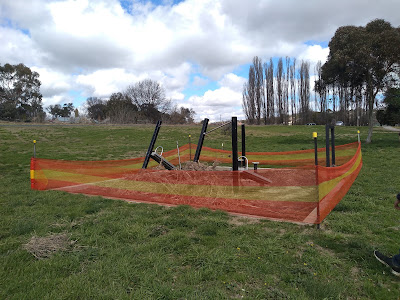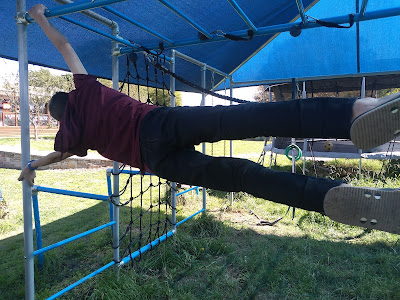I looked into protein shakes to increase my protein intake. They taste great and take less effort and time than cooking food, but they seem expensive and lack many nutrients that are present in meats, vegetables, and grains.
Strangely, I am yet to find any decent comparisons of the amount of protein and the price per serve in protein shakes to meats or other foods. So I looked up and compared several meats, eggs, vegetables, and a few grains. For ease of reference, I included the websites I gleaned the information.
I am interested in protein percentage and noted if the food is not considered a complete protein. Leucine is an amino acid that is important for building muscle, repairing muscle, and it is metabolised in muscle fibers. I am also interested in iron content as I struggle to get enough iron. I know a lot of people care about calories, so I also include the amount of calories of each even though I think people vastly misunderstand calories.
To give the below comparison some perspective, the recommended daily intake for a male about my size and age is roughly:
Protein 50 g
Leucine 2.4 g
Iron 8 mg
Energy 2,000 kcal
To make the comparison as useful as possible, I am comparing 100 grams of each as it would be around one serving, except for the protein powder which is one 40g serving.
Protein Powder
Note: whey protein are considered complete proteins as they contain good amounts of all essential amino acids.
Protein Powder per 40 g serve
https://www.uprotein.com.au/100-whey-protein-powder-enzymes-2kgs/
Protein 33 g
Leucine 3.39 g
Iron 0.74 mg
Energy 149 kcal
Meat
Note: meat based proteins are considered to be complete proteins as they contain good amounts of all essential amino acids
Note: about 14% to 18% of iron is usually bioavailable from meat
Chicken per 100 g
https://fdc.nal.usda.gov/fdc-app.html#/food-details/171477/nutrients
Protein 27.3 g
Leucine 2.33 g
Iron 1.04 mg
Energy 165 kcal
Beef per 100 g
https://fdc.nal.usda.gov/fdc-app.html#/food-details/174032/nutrients
Protein 25.9 g other cuts as low as 13.6 g
Leucine 1.45 g
Iron 2.6 mg
Energy 250 kcal
Rabbit per 100 g
https://fdc.nal.usda.gov/fdc-app.html#/food-details/174348/nutrients
Protein 33 g
Leucine 2.57 g
Iron 4.85 mg
Energy 173 kcal
Quail per 100 g
https://fdc.nal.usda.gov/fdc-app.html#/food-details/169902/nutrients
Protein 25.1 g
Leucine unknown
Iron 4.43 mg
Energy 227 kcal
Squab per 100g
https://fdc.nal.usda.gov/fdc-app.html#/food-details/169905/nutrients
Protein 23.9 g
Leucine unknown
Iron 5.91 mg
Energy 213 kcal
Eggs
Note: eggs are high in all of the essential amino acids and are considered to be a complete protein
Chicken egg boiled per 100g
https://fdc.nal.usda.gov/fdc-app.html#/food-details/173424/nutrients
Protein 12.6 g
Leucine 1.08 g
Iron 1.19 mg
Energy 155 kcal
Quail egg per 100 g
https://fdc.nal.usda.gov/fdc-app.html#/food-details/172191/nutrients
Protein 13 g
Leucine 1.15 g
Iron 3.65 mg
Energy 158 kcal
Vegetables and Grains
Note: many plant based proteins are considered to be incomplete proteins as they are low in one or more essential amino acids
Note: Plant based iron is not as bioavailable as animal based iron, for example less than 2% of the iron in spinach is bioavailable
Spinach per 100g
https://fdc.nal.usda.gov/fdc-app.html#/food-details/168462/nutrients
Protein 2.86 g (not a complete protein)
Leucine 0.223 g
Iron 2.71 mg (low bioavailability)
Energy 23 kcal
Soy bean (sprouted and steamed) per 100g
https://fdc.nal.usda.gov/fdc-app.html#/food-details/168460/nutrients
Protein 8.47 g
Leucine 0.607 g
Iron 1.31 mg
Energy 81 kcal
Peas per 100g
https://fdc.nal.usda.gov/fdc-app.html#/food-details/170419/nutrients
Protein 5.42 g (not a complete protein)
Leucine 0.323 g
Iron 1.47 mg
Energy 81 kcal
Lima beans per 100 g
https://fdc.nal.usda.gov/fdc-app.html#/food-details/174253/nutrients
Protein 7.8 g (not a complete protein)
Leucine 0.673 g
Iron 2.39 mg
Energy 115 kcal
Corn per 100 g
https://fdc.nal.usda.gov/fdc-app.html#/food-details/169998/nutrients
Protein 3.27 g (not a complete protein)
Leucine 0.348 g
Iron 0.52 mg
Energy 86 kcal
Buckwheat per 100g
https://fdc.nal.usda.gov/fdc-app.html#/food-details/170286/nutrients
Protein 13.2 g
Leucine 0.832 g
Iron 2.2 mg
Energy 343 kcal
Rice per 100g
https://fdc.nal.usda.gov/fdc-app.html#/food-details/168930/nutrients
Protein 2.38 g (not a complete protein)
Leucine 0.197 g
Iron 0.2 g
Energy 130 kcal
Wheat per 100g
https://fdc.nal.usda.gov/fdc-app.html#/food-details/168944/nutrients
Protein 9.61 g (not a complete protein)
Leucine unknown
Iron 3.71 mg
Energy 332 kcal
Mulberry fresh leaves per 100g
https://pubmed.ncbi.nlm.nih.gov/17135021/
Protein 7.34 g (range 4.72 to 9.96 g)
Leucine unknown
Iron 7.53 mg (range 4.70 to 10.36 mg)
Energy 77.5 kcal (69 to 86 kcal)
Conclusion
Meats: Rabbit meat has more protein than chicken or beef, and had the highest percentage of protein other than the protein powder. Surprisingly, rabbit meat has far more iron than beef or chicken. Rabbit meat was also the superior meat when it comes to the Leucine content. Rabbit meat is very low in fat. It makes me wonder why more people don't eat rabbit meat. Rabbit is far too expensive and difficult to buy here, so I would eat chicken as it is high is protein, high in leucine, and has some iron.
Eggs: Chicken eggs are reasonably affordable and easy to buy, and has good levels of protein, high in leucine, and has some iron.
Plant foods: As far as plant foods go, buckwheat was the stand out. Buckwheat is one of the few plants that are considered complete proteins. Buckwheat is nutritionally comparable to egg, but has higher iron and higher fiber, and is easier to digest. The carbohydrates in buckwheat are healthy.
Novel plant foods: mulberry leaves are an underutilised (and seemingly unknown) vegetable. Mulberry leaves are far more nutritious, easier to grow, higher yielding per square meter, need far less water, and use less fertiliser etc than common vegetables that we eat. I find them to be unpleasant raw, but when cooked and used like spinach they have a mild taste and an agreeable texture. I only included this for my own curiosity as you probably can't buy them anywhere and would need your own tree if you ever planned to eat these leaves.
Price comparisons per gram of protein
I tried to compare rough costs per kg, cost per serving, and the cost per gram of protein of some of the foods listed. Some meats (rabbit, squab, quail) are expensive or even impossible to buy locally, so I have not included them below. Prices vary from day to day, and from store to store, so the following will not be completely accurate. Still, this is interesting and may be of some use, so I will leave it in for now.
Uprotein powder costs $94 for 2 kg, $1.88 per serving, or about 6 cents per gram of protein
Chicken costs about $10 per kg, $1 per 100g or just under 4 cents per gram of protein
Beef mince costs about $11 per kg, $1.10 per 100g or just under 5 cents per gram of protein (or vastly higher depending on the price of meat or the cut eaten)
Spinach price varies considerably, sometimes about $15 per kg, $1.50 per 100g, or about 52 cents per gram of protein
Buckwheat costs about $7 per kg, $0.70 per 100g, just over 5 cents per gram of protein
Eggs cost about $5 per dozen, 2 eggs weigh about 100g and cost about $0.83, or just under 7 cents per gram of protein. If only eating egg whites (as many people do), the cost per gram of protein doubles


























